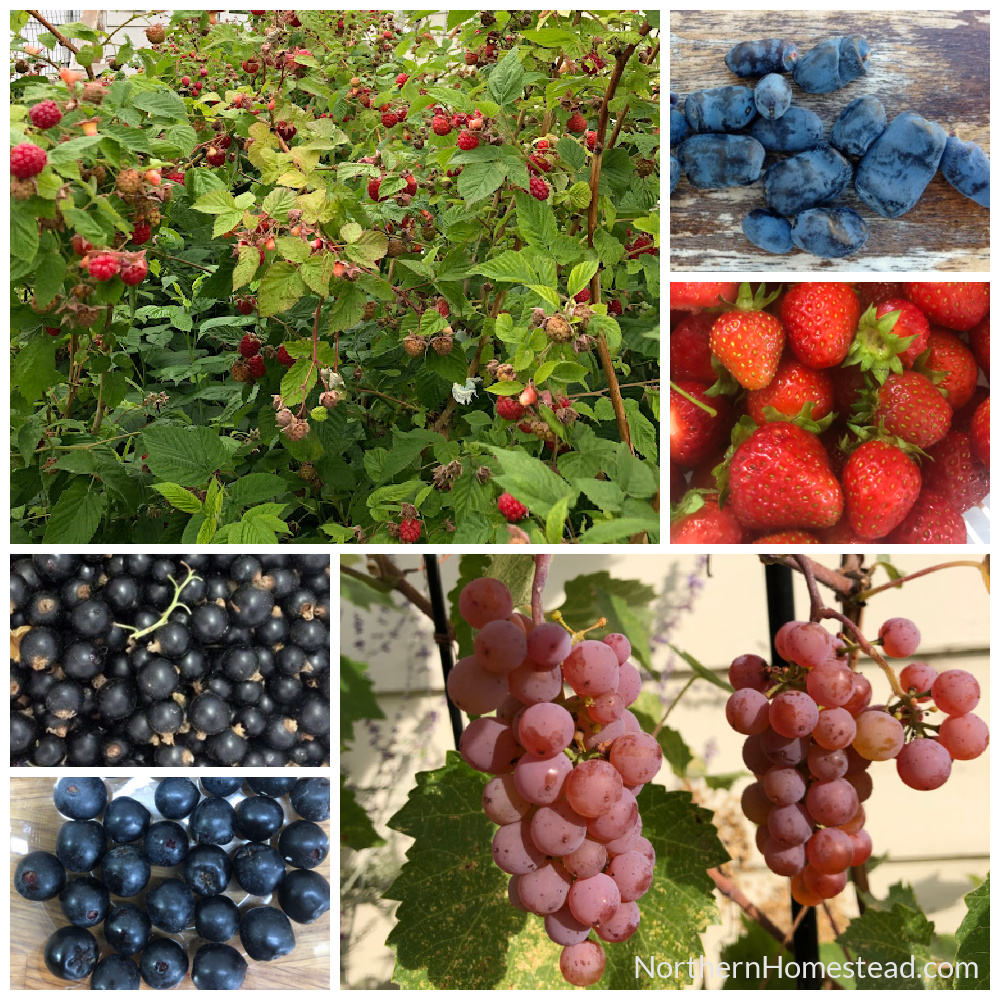
Berries are the best fruit cold climate gardeners can grow, the category of produce where we can shine. Here we share the varieties of berries that we grow in our zone 3 garden and some care and propagation tips. Growing berries in a permaculture cold climate garden.
Why grow berries
Of all the fruit to grow, berries are the best choice for a cold-climate garden. Many of them are hardy to zone 3 and lower and ripen quickly.
It often takes years till a fruit tree produces fruit, berries on the other hand often bear fruit in the first few years.
Berries are a must-have for a permaculture garden, plant them once and enjoy them for many years. The hardy varieties among them can also be a part of a shelterbelt.
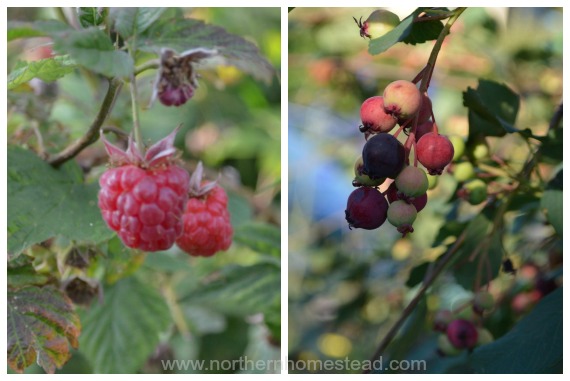
Berries are very healthy. Dr. Fuhrman writes: Berries are one of my superfoods and are represented by the second “B” in G-BOMBS. Rich in fiber and phytochemicals and low in calories, they have the highest Aggregate Nutrient Density Index (ANDI) scores of all fruits. Blueberries, raspberries, strawberries, and blackberries are vibrantly colored with antioxidant phytochemicals, and they are some of the highest-antioxidant foods in existence. Read more about the health benefits of berries in Eating Berries Reduces Your Risk of Heart Attack.
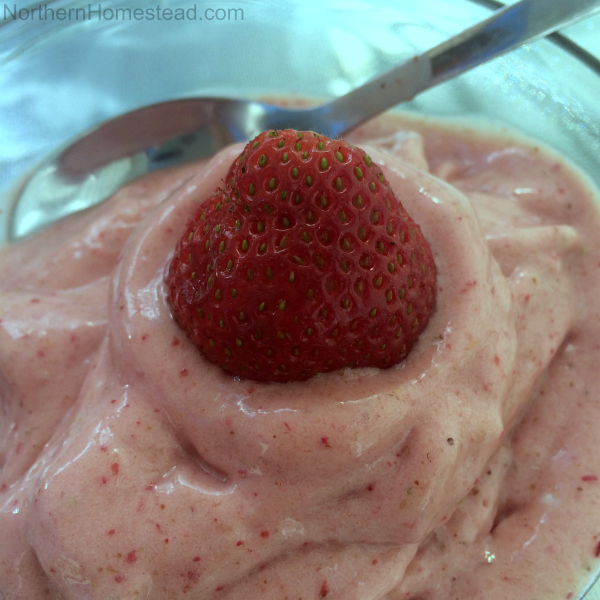
Berries are also beautiful in the garden. Starting an early spring with a display of flowers, that turn into colorful berries during the summer and often end the season with another display of amazing fall foliage.
We love flowers and grow many perennial flowers, but berries have a special place since they are not just beautiful, but have so many health benefits and are delicious, too.
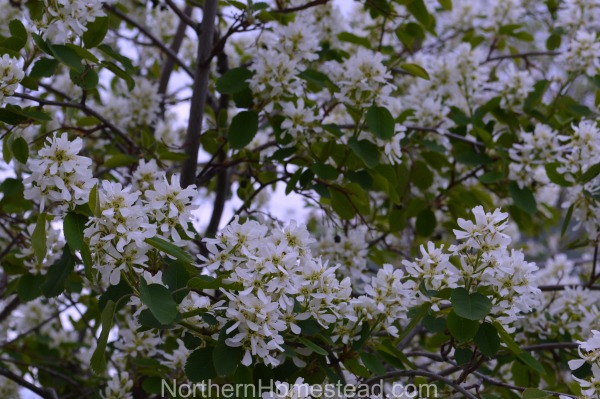
Propagating berries
Another great advantage of growing berries is, that they are so easy to propagate.
Raspberries and blackberries grow suckers, many other berries do that too, just not as aggressively. The suckers can just be dug up and planted else were.
Strawberries grow runners, some varieties do that more than others. But generally speaking, if you start with one plant, you will soon have a few more. Strawberries do not live long, about 3 years, and then they need to be replaced. That’s why they produce new “baby” clone plants to supersede themselves.
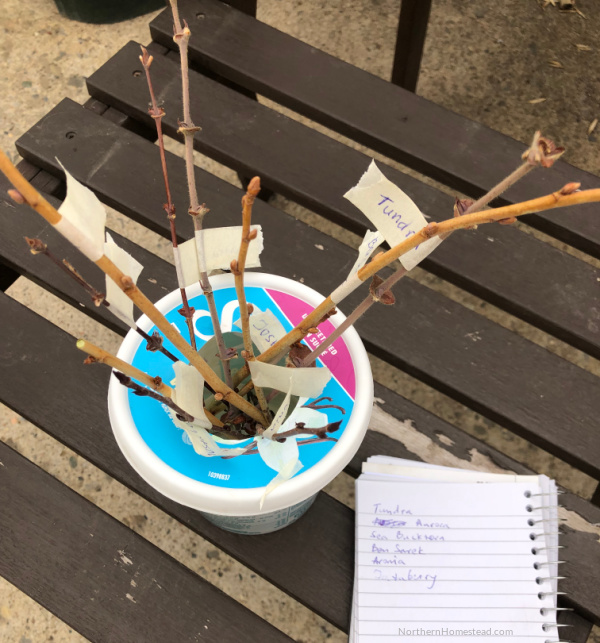
Most berries can be propagated by cuttings. Cut young shoots in early spring and put them in water. You can also use some rooting hormones and plant the cutting in the soil right away.
Another option is to lay down branches and cover them with soil. The branches will grow roots that you can dig up and plant else were. Sticking them into a pot with soil works too. Wherever soil touches the brunches, they will grow roots.
Where to plant berries
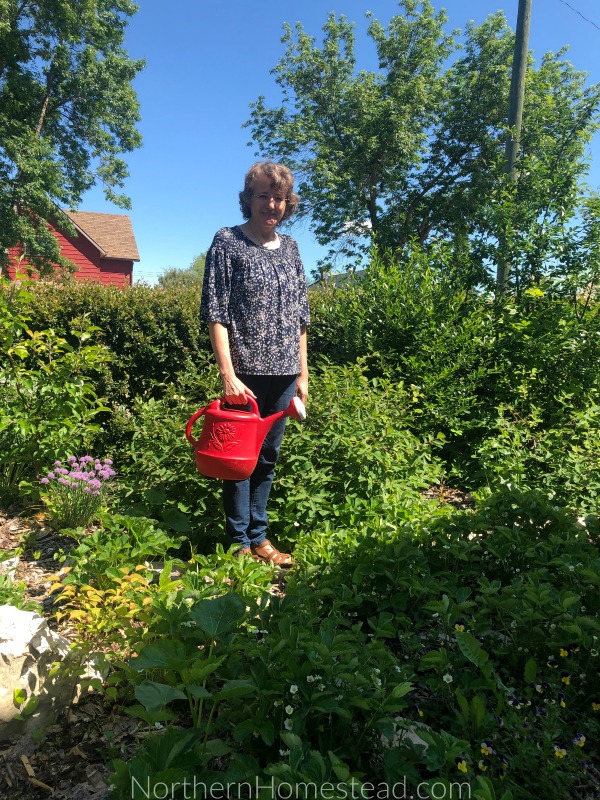
Growing berries in a permaculture cold climate garden is simple. Berries are great companions for trees. They too prefer a more fungal soil life, vs vegetables that grow well in more bacterial soil.
In a food forest, you can plant berry bushes on each side of a fruit tree. Plant chives, rhubarb, lilies, and other edible perennials around and you got a beautiful plant guild. Adding some nitrogen-fixing plants like clover, comfrey, or lupine will help the combination to grow well.
Personally, we like to keep raspberries apart. They are so aggressive growers, that keeping just 2 plants in a guild is almost impossible. Plant a whole row in a dedicated space and have more berries and less stress.
Strawberries can be used in a guild as ground cover, but for production, they do better in full sun.
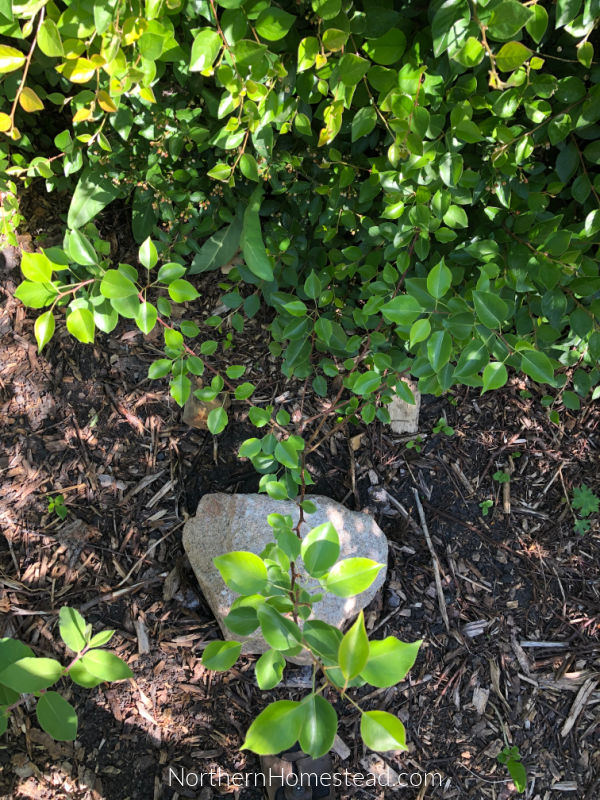
Mulching the soil with woodchips helps to keep weeds down, and moisture in, and also builds that fungal soil life that berries like. Every few years we add about 2 inches. In the autumn all the perennials and strawberries can be buried with wood chips. If adding wood chips in spring, just layer them around the plants.
Now let’s take a look into the varieties of berries for the Zone 3 garden that we have experience with.
Haskap Honeyberries
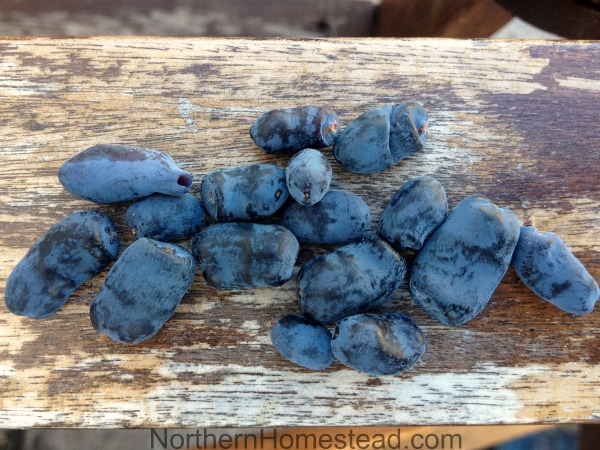
Haskap Honeyberries is the earliest berry to ripen in our garden. The name honeyberry is a bit misleading, I often say that you need honey to really enjoy these berries. They do get sweeter with ripeness, but if you wait too long, birds will get them before you.
For proper pollination, you will need two plants and it does matter what variety you have. Aurora is a great pollinator for other Honeyberries, and I love the taste. We also grow Tundra in our garden.
Currants
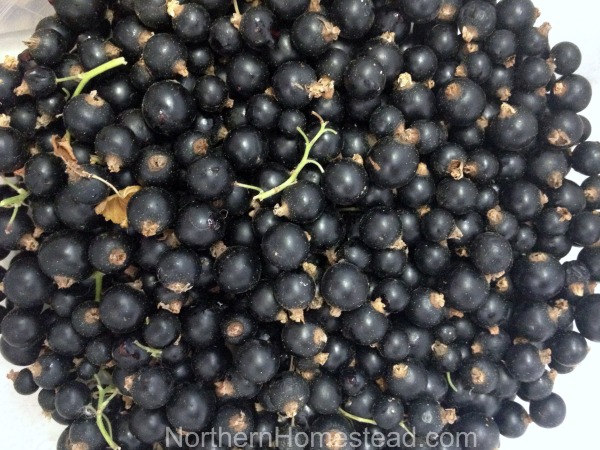
Apparently, currants have 8 times the vitamin C of an orange. In our garden, we grow black currants, but red and white would grow here too. If you have space, grow a collection of them.
Ben Sarek is the variety that we grow. It is a compact and productive plant.
Saskatoon or Serviceberries
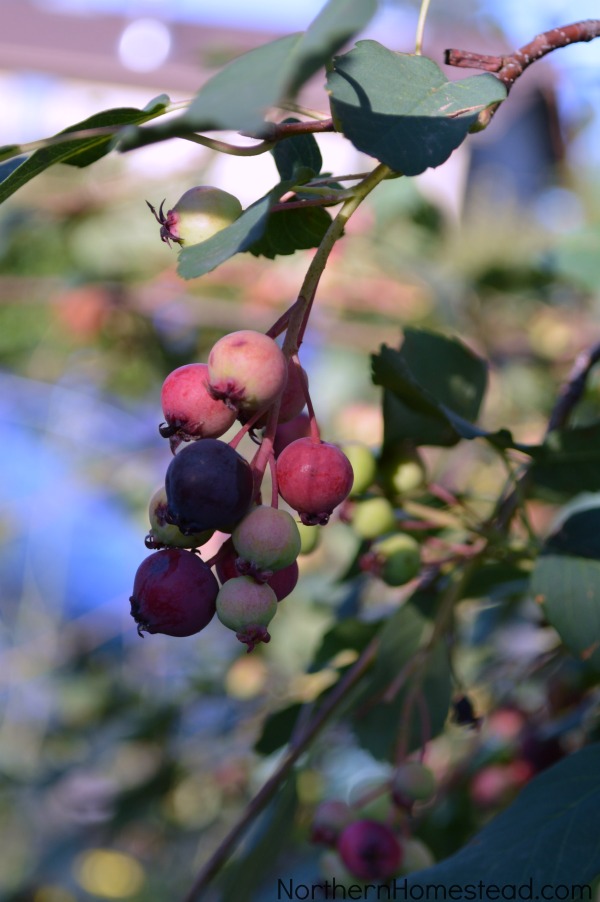
Saskatoon or Serviceberries are a must-have for cold climates. I didn’t even know they existed prior to moving to a cold climate. I did find that we had to get used to the texture. But these little berries grow on me. Very reliable and yummy. Plus this plant is very beautiful all throughout the season (see flower picture above). And if you are into pie making, saskatoon pie is delicious.
There are many varieties of Saskatoons to choose from. Our bush was already here, so I’m not sure what it is. It’s a nice one though. Saskatoon you-pick farms are a great place to taste different varieties if you want to choose a specific one.
Raspberries
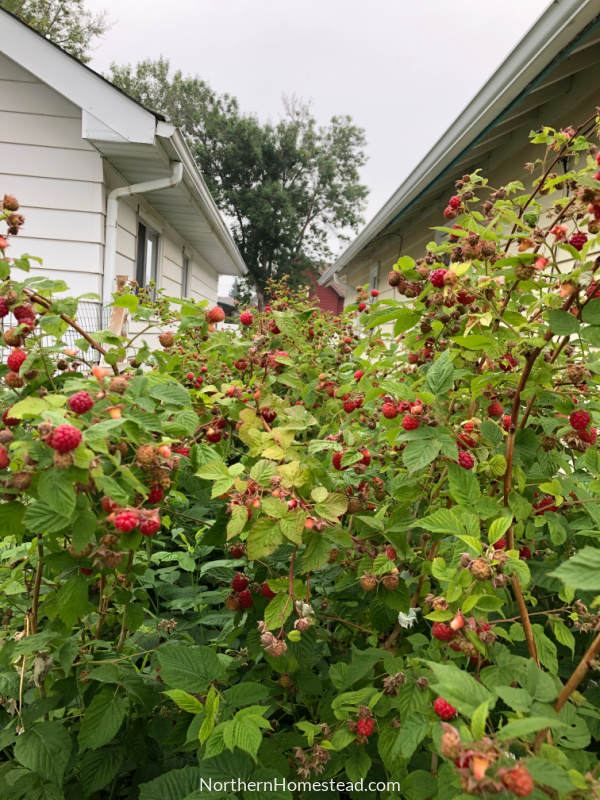
Raspberries are hands down my favorite berries. We grow lots of them and try to have homegrown all winter long for breakfast.
Again, there are so many different varieties of raspberries, not just in the red category, but yellow and black.
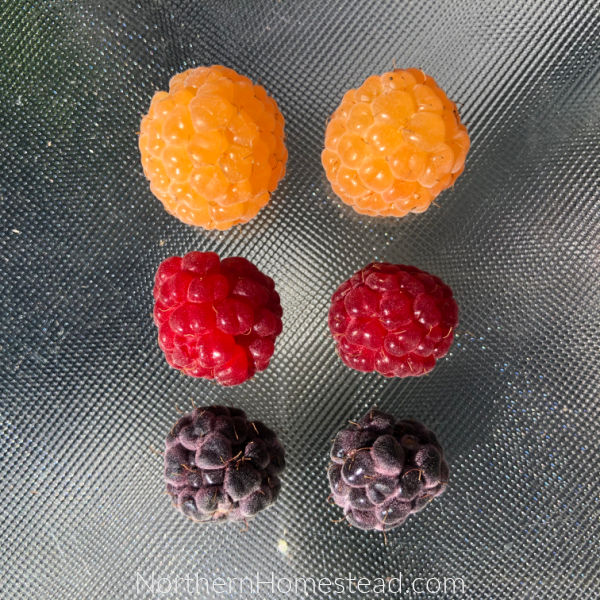
We grow the yellow Honey Queen, Red raspberries that were already here (no name), and Wyoming Black raspberry.
The yellow and black raspberries are more of a fun crop, while the red raspberries make up the main crop.
Raspberries are usually either biannual, they produce fruit only from buds on second-year canes or primocane which produces fruit in the fall and can be cut back next spring.
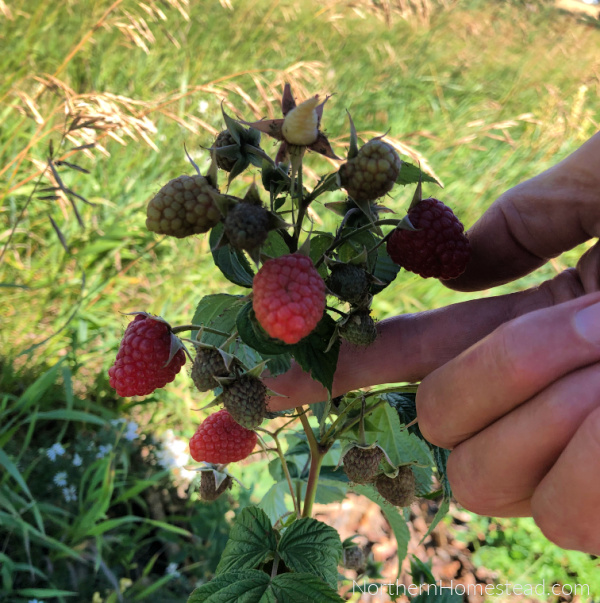
Polka is a new primocane raspberry to us, the berries are bigger and mature later in the season.
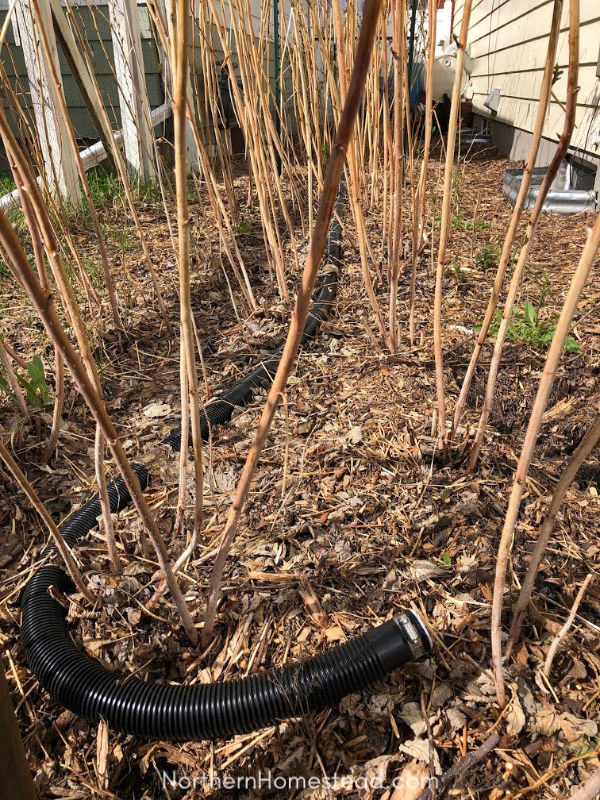
We grow our main crop of raspberries between the houses, a place that was useless before, now we harvest and freeze an unbelievable amount of berries. The watering system helps the canes to be very productive.
Read more about growing raspberries here.
Blackberries
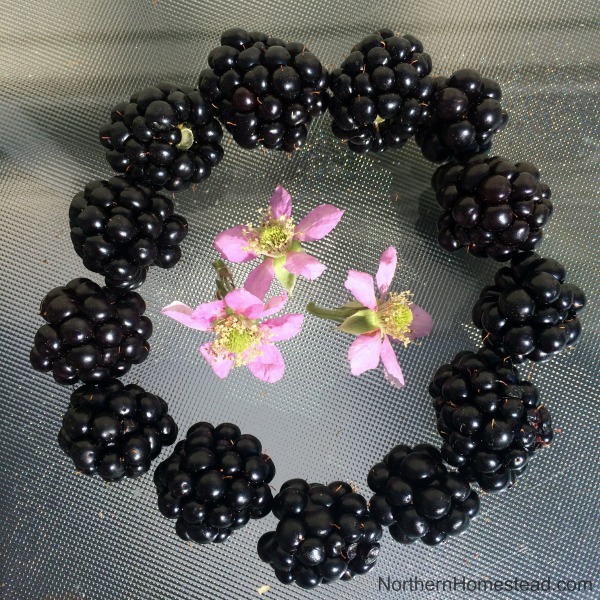
We grow the Chester thornless blackberry in our garden. And even though they are sold as a hardy plant, our experience is that they are not hardy enough for zone 3. We cover them up with leaves every fall. They also do not make it to fully ripen during our short summer, but most years we get enough to feel that growing them is still worth it.
Strawberries

Strawberries are so fun to grow in the garden. We grow different varieties, wild strawberries, June bearing, everbearing and day-neutral. The goal is to have strawberries all summer long.
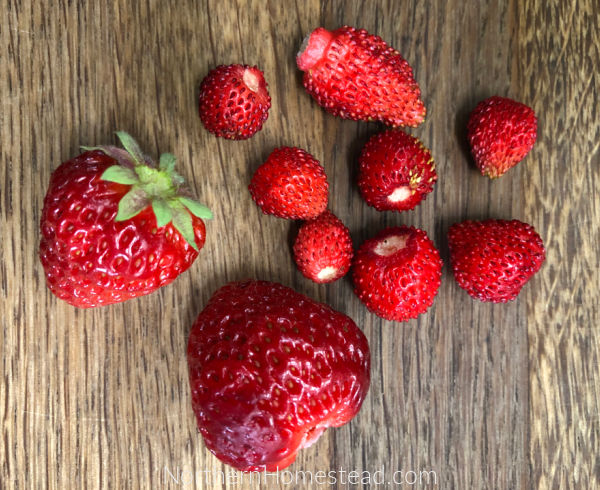
The Alpine or wild strawberries are smaller than regular strawberries, they also are quite different in taste and texture. We grow a few plants in the greenhouse, and others along the pathway outside. They produce all summer and are a yummy little snack.
Aronia
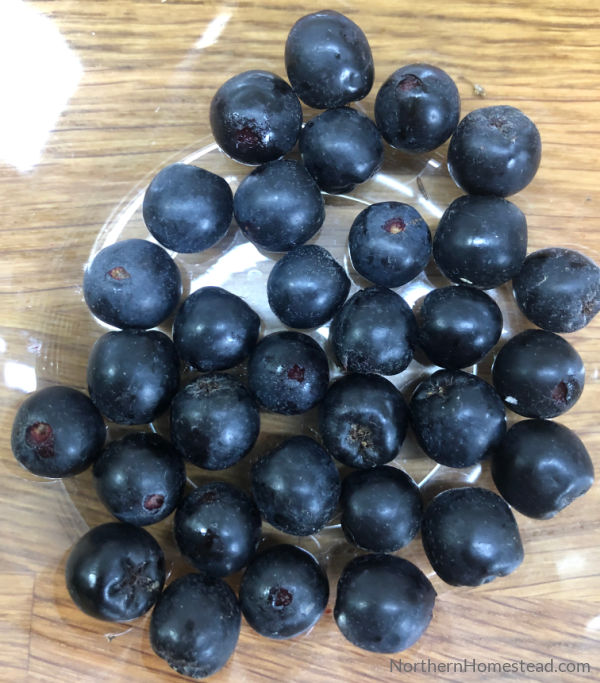
Aronia is a beautiful plant, even if the berries are tart. After a good frost though, they are quite edible. Dry them and add them to a tea collection. Read more about Aronia berries here.
Grapes
We started with Valiant grapes that you might have seen in one of our video garden updates. They grew prolifically but one spring did not come back. We were quite surprised and are not sure if it was too cold for them in our zone 3, or if the sheltered location they were at just got too dry.
Plant don’t always become winter kill because of the cold, but they will if it is too dry. Something to keep in mind.
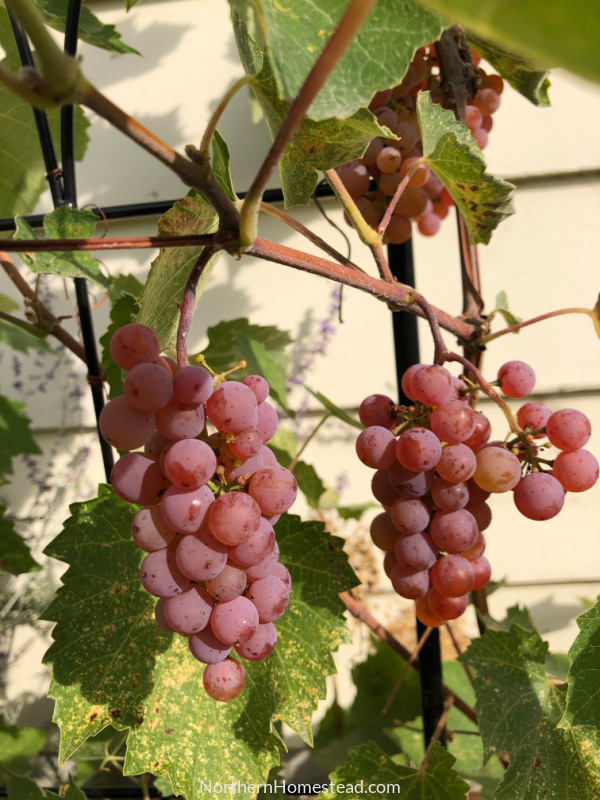
So we added a somerset grape, it is not as hardy, but seedless and quite yummy. We do cover it for winter, though.
Like most cold-hardy grapes, the berries are very small, but when fully ripe, quite sweet for a cold-hardy variety. Read more about growing grapes here.
Blueberries
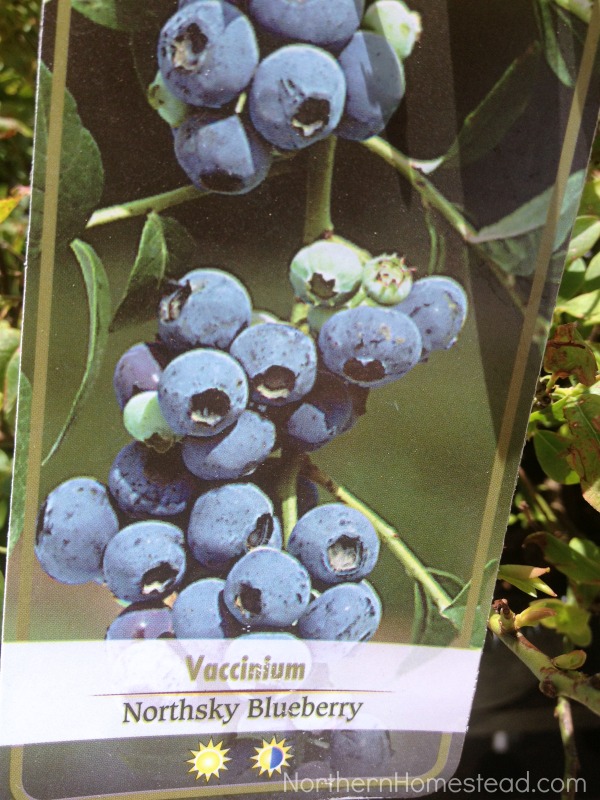
Not sure why, but we keep “growing” blueberries. We love blueberries but in our rich soil, the plants are really just surviving. If you have a spot with acid soil, it sure is a great berry to grow.
If you like us can not grow blueberries, that is not a bad thing. That just means you have great soil for other plants.
Gooseberries
One of the first berries we added to our garden was gooseberries. However, we soon discovered that they were on their way to take the garden over, so we got rid of them as soon as possible.
Then we added a Pixwell gooseberry bush, it seems to stay in place. No fruit yet.
Lingonberry
Lingonberries are new to us. They are small, red berries that grow on a shrub. I must admit that they did not grow much in the first year, so we have to wait and see.
Sea-Buckthorn
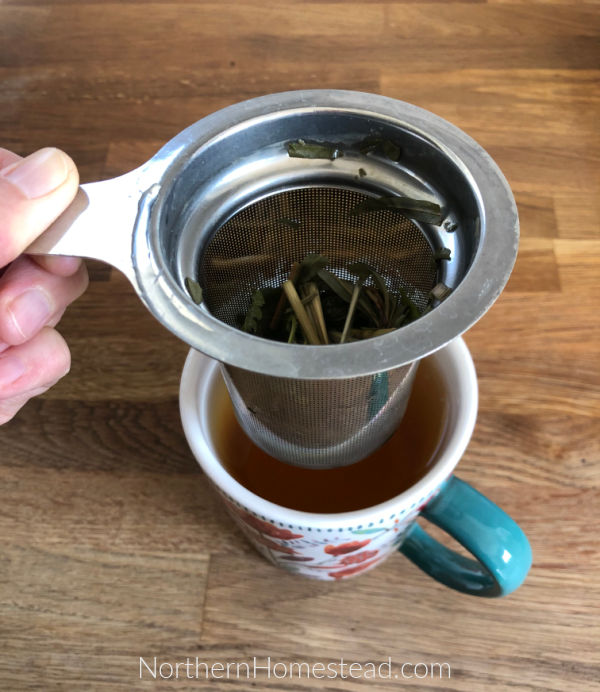
We also planted Sea-Buckthorn for the soil, since they are nitrogen fixers, and for making tea.
Jostaberry
Jostaberry is a Gooseberry and Currant cross. It is too young to have berries yet.
Goji or Wolfberry
Wolfberry (Lycium) is surviving, I would not say thriving. People in Calgary seem to grow them successfully, we will see. Read more about Goji berries here.
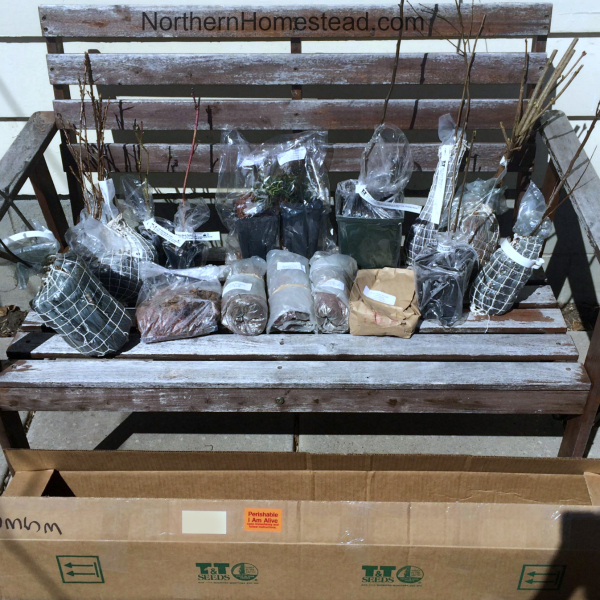
This is the list of the berries we grow or have grown in our garden. Most of these are available at T&T Seeds in Canada. Some were already growing here, and some we bought locally.
There are more great berries to grow in a cold climate. Please share in the comment below what berries you are growing.
Check also out varieties of perennial vegetables and fruit trees for Zone 3 garden.
We invite you to subscribe to Northern Homestead and follow us on Instagram, Facebook or Pinterest for the latest update.

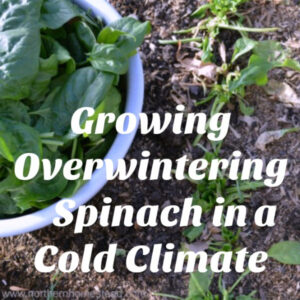
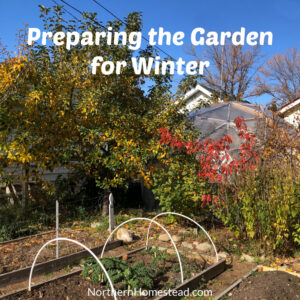

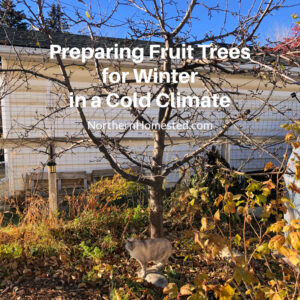

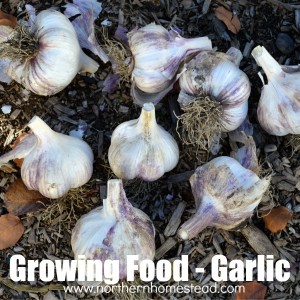
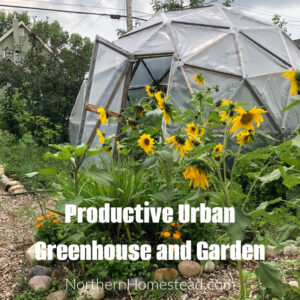

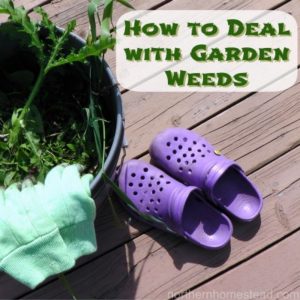
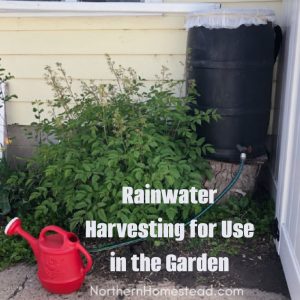

I’m in zone 1 and have similar experiences with berries. Haskap are my best producers and are reliable year after year. I don’t feel the need to sweeten them for some reason. Wyoming black raspberries do well here in zone 1, so you’ll soon have lots of them. They do not sucker.
I recommend the yellow raspberries if you can find them. The taste is amazing!
Yes, I also grow the Golden Raspberries and the taste is excellent! Zone 3-4 for us Northwest Montana.
I am in zone 1 climate just planted blueberries of different kinds and I am so excited to see if they would tolerate the extreme cold of zone 1 also I planted raspberries last year and now they are starting to flower and very eager to see them fruit
Wait and see
I’m in Zone 0 – blueberries, crowberries,cloudberries, etc. have to grow just above the ground or else they are blown away by the winds (no tree breaks). But I’m thinking raspberries could grow if they had adequate cover. Location, location, location.
First, I love having a gardening blog to go to that talks about zone 3!
We are out in the country in zone 3 Manitoba. We have haskaps, raspberries, strawberries, Chester thornless blackberries, and high bush cranberries. We’ve found that lots of creatures other than humans love the haskaps. The first couple of years, deer chewed down all the new growth. Last year, we protected the bushes so we finally had some berries. When I went to pick them, they were all gone – who ate them? Not sure! Birds, moles, mice . . . this year I’ll have to get there first.
Sorry to hear that the blackberries haven’t proven hardy to zone 3. We just planted them last summer, and it’s been a very cold winter. We had lots of snow so maybe they survived. We’ll see.
We haven’t gotten berries from the high bush cranberry yet. Hopefully this summer.
And I’ve ordered currants this year – the black, red, and white mix from T & T. Excited to see how they’ll do.
Hello from MB and from Zone 3! We have also planted all the above fruit plants last year and are hoping that they survived and give us something to look forward to this summer (2019). the Chester BB are what we are most excited about they were all covered with snow this year so we are very hopeful. You guys can check us out on instagram as well @gardeningmanitoba we will be sharing if anything made it through the winter lol.
A good snow cover is very helpful in the winter. We can not guaranty that in our garden. Hope all grow well for you.
I live in zone 3 and am growing strawberries, black raspberries, blackberries, honeyberries, serviceberries, gooseberries, elderberries, and red currants. I tried blueberries, but we don’t have acidic soil. I grew red raspberries but they were very invasive and now I only have a couple of small plants after removing most of them. The blackberries I have are not thornless; I don’t recall the name of them, but I ordered them from a nursery in WI that declared they were hardy – and so far, they’ve survived 5 Minnesota winters without any special care.
Thank you for sharing. Interesting that you thought that raspberries are more invasive then gooseberries. I think that’s how we are all different and it is good so.
I would like to grow some elders, do they require anything special to grow in zone 3?
We don’t have room for elderberries, so I have no experience. Just sharing what I learn from others here. York, Johns, Nova, Bob Gordon, etc. elderberries supposed to be zone 3 hardy, but the experience of growers is that they still die back. Some commercial growers cut them off at ground level each year, as they fruit on new wood anyways. This way it would be easy to cover them with mulch and or snow. Hope this helps.
Elder grows wild in my Alaska property, zone 3 B. The flowers and berries are very pretty.
Hi everybody and it was nice to read your comments on berries. I have all the berries except Saskatoon berries. I live in Kitchener and now the climate has change so much we are lucky that hopeful we will get everything. Well I write a miracle on Plum tree which never gave a fruits except occasional one or two plum. It happened this year the plum tree was full of plums and the plant could not carry the weight of the fruits so the plant fall down with all the raw fruits. Half of my plant went in my neighbour backyard so I ask if he was ok until the fruits ripes so that the birds can enjoy them and then I can cut the whole tree which he was ok. Miracle happened that the same plant was happy in that kind of conditions and the plant knew that soon he wil have dye by cutting so its hoop up two babies of same fruits for me have so I don”t miss the plum old plant and curry over. Mother natural is very very interesting. Hope you too will experience my kind of situation that plants too do mericales
We can’t always explain natural things. Being grateful is the best way to deal with it.
We are trying Arctic raspberry here but it is long to establish. You could also try cloudberry but they are more of a bog plant. Ascap, service berry, strawberry, blueberry, raspberry, ligonberry, gooseberry, blackberry, godgi berry are other ones we try to grow or grow naturaly here.
Thank you for sharing your wonderful knowledge and experiences! We are in the process of clearing land for a garden site and I am new to gardening in a colder zone, we live in Wasilla AK.
I’m in Anchorage. Cherries do well behind a wind break. apples easy plums difficult for me. Cherry plums look promising compass and sapalta, honey berries nice beautiful and productive ,sea berries easy but invasive, I’m looking for zone 2 berries and fruit tree plants.
Hi Anna I have been growing black and red currants now for 3 years but don’t have much luck, I hardly get any berries and the ones I get have worms. What can I do to prevent that. We live in a small town, our backyard is quite exposed to wind and open fields. It is also very dry. This year we have hardly had any rain. I am concentrating On watering what really needs it. Please advise, Inge
Start with the soil. Good soil, healthy plants. We mulch heavily with wood chips. It keeps moisture in and builds soil over time. Also, look into pruning. Currants produce better when pruned properly. There are many videos on this topic.
Berries are usually forest plants, they do not like open wind exposier. Maybe you can build a wind barrier, or plant something to protect.
Here in Rocky Mountain House it’s stretching it to call us zone 3; maybe 2b (last frost June 3). We’ve tried making our soil more acidic for blueberries, and though the plants are still alive after several years, we don’t get fruit.
The first year I got grape clusters we had heavy snow in September – ice wine?
We do have lots of wild highbush cranberries in the woods. Have tried transplanting some into the garden but the best crop still comes from the wild – they make the BEST jelly!
You can try to plant your blueberries next to the cranberries in the wild (gorilla gardening). They might do well there.